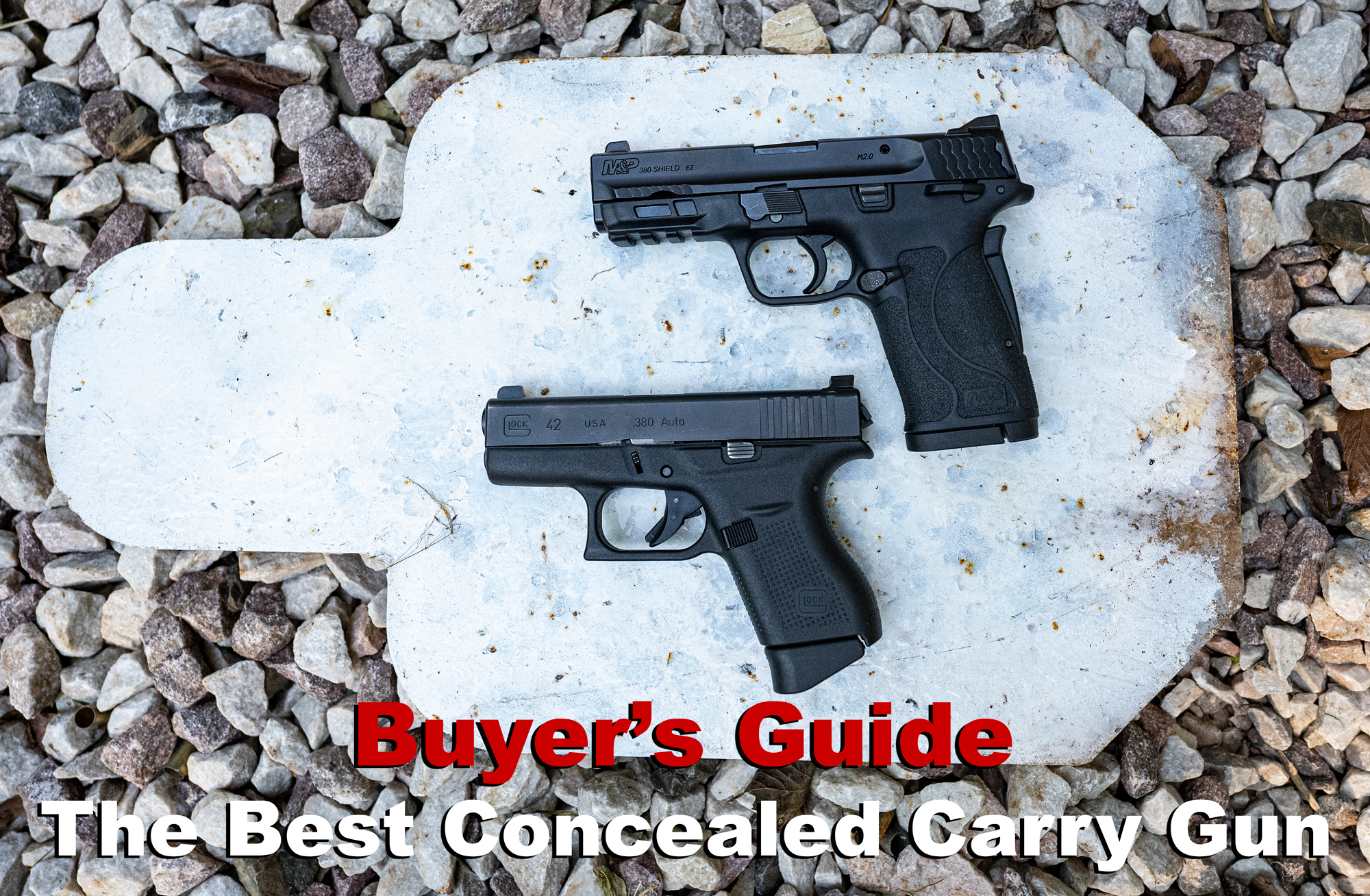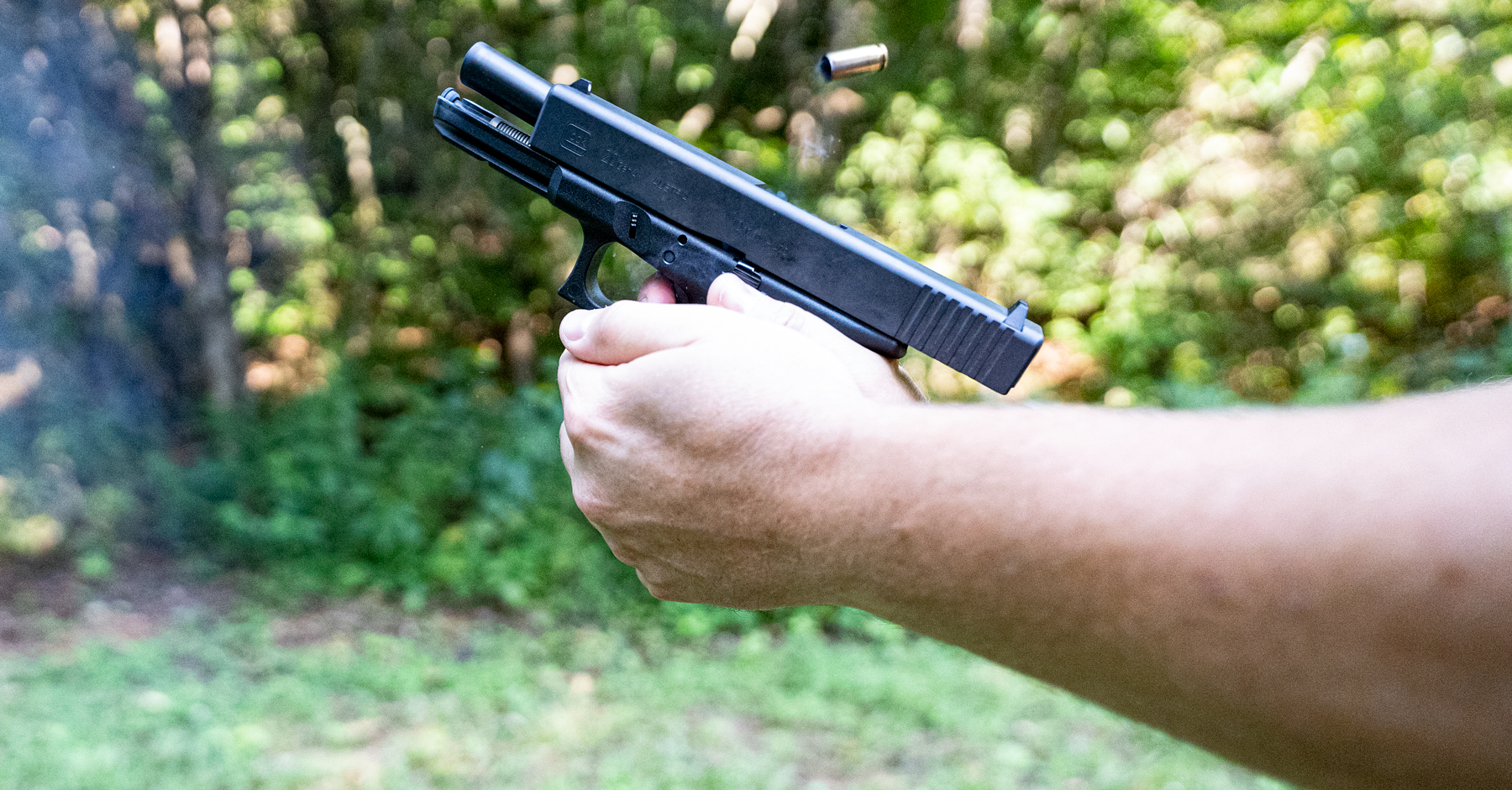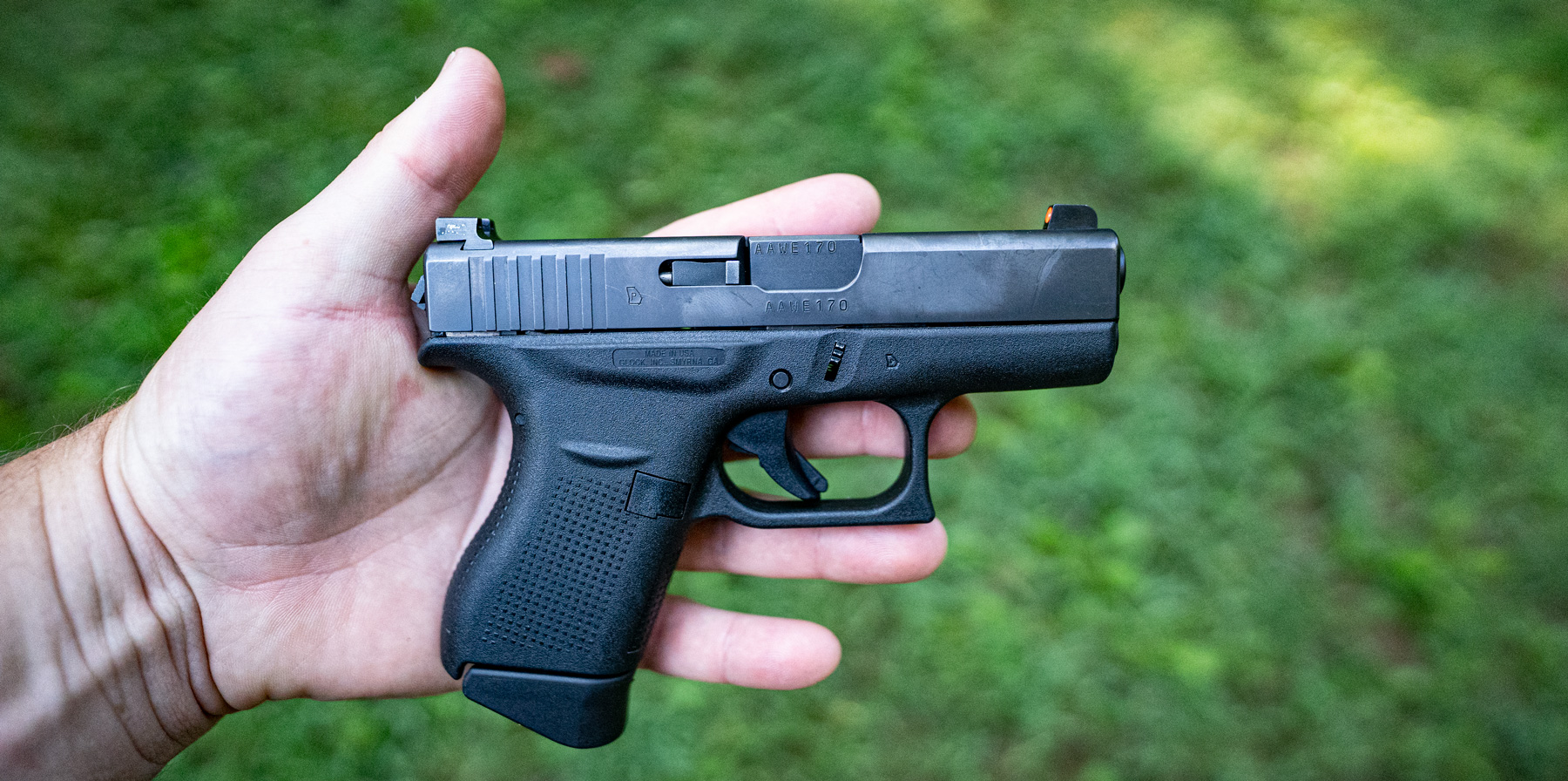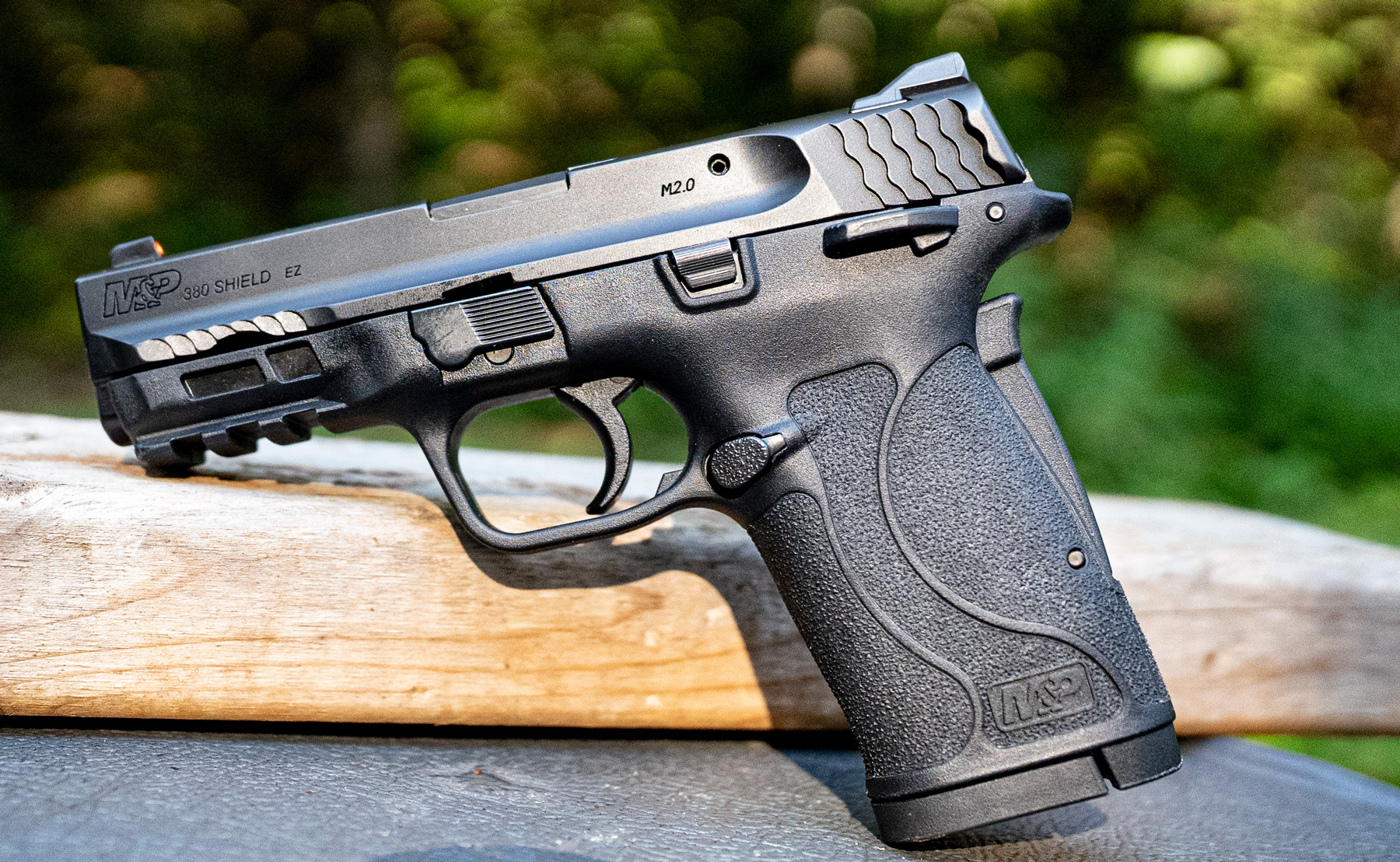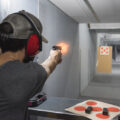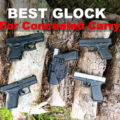This guide provides you with some things to consider when shopping for the best concealed carry gun. For each of us, the answer may be different but we also recommend a few makes/models to start with.
Choosing the best concealed carry gun is no easy task. There are hundreds of options available and plenty of “advice” on which option is best. Many shooting “experts” are quick to promote small, sub-compact models for concealed carry and other self-defense applications. The idea is the smaller the handgun, the easier it will be to conceal.
However, size isn’t everything. The ability to hide a weapon is just one factor in how effective that weapon will be in a defensive situation. A weapon’s effectiveness can’t be gauged only by how undetectable it is on your person. The ultimate purpose of the weapon isn’t to be hidden, it is to stop an attacker. In order to do that, it needs to be a weapon you can comfortably shoot accurately and efficiently, particularly when under duress.
Don’t carry what makes the best concealed carry gun the best? Click here to skip right to our top 3 recommendations.
Your Gun’s Size Matters
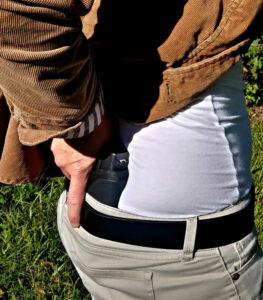
However, size matters for more than concealment. Generally, the smaller the handgun, the less forgiving it is. This goes for aiming as well as recoil.
Handgun Size Affects Recoil and Shoot-ability
As a general rule, smaller lighter handguns will produce more felt recoil. This is a matter of physics. If you can remember back to high school science class, you might recall a guy named Newton and his Third Law.
“For every action, there is an equal and opposite reaction.”
For firearms, this principle breaks down like this: when you pull the trigger, the bullet and hot gases go forward (the action), while the gun goes backward (the opposite reaction). That backward motion is recoil.
What Impacts Recoil?
There are several factors that affect how much felt recoil a firearm produces. One of these is the mass of the firearm. All things being equal, a heavier gun will absorb more energy and therefore produce less felt recoil for the shooter. Because recoil can upset shooter confidence and target accuracy, a larger heavier handgun may actually be more appropriate for weaker, recoil sensitive shooters.
Size is one area where perception does not always equal reality. Larger handguns can seem more intimidating. Inexperienced and small-framed shooters may shy away from a larger weapon. They may look at a weapon with some size and heft and think it will be louder, harder to shoot, and produce more recoil. This is not usually the case. Instead, the size of the handgun can actually reduce recoil and feel more stable in the hand, allowing for better target accuracy, especially for multiple shots.
While a larger handgun could pose some problems with concealment, don’t forget concealment isn’t the ultimate goal. You need a weapon you can handle effectively, shoot accurately, and carry with confidence. The real work of the handgun must happen after it leaves its concealed place to neutralize a threat.
Understanding Handgun Size
Generally speaking, handguns fall into one of four size categories, although many models blur the lines, falling easily into more than one.
Full Size Handguns
The most common size pistol, full-size guns generally measure 5 or more inches in height, and 7 or more inches in length. The magazine capacity of a full-size pistol is typically high, with some models capable of holding close to 20 rounds.
In spite of the size and overall weight, which may be intimidating to some, full-size handguns are actually the easiest to shoot. The major drawback is the larger size and weight makes them more difficult to conceal.
Popular full-size pistols include the Glock 17, Beretta 92, Sig Sauer P226, and the Ruger SR 1911.
Compact Handguns
Slightly smaller than full-size handguns, compact pistols are often created by shortening the barrel, slide, frame length and height of their full-size counterparts. The magazine capacity is often the same (although sometimes slightly reduced) as a full-size. Some compact models accept full-size magazines, increasing capacity without major modifications.
Handguns in this category are somewhat easier to conceal, although some shooters still consider them problematic. However, most pistols in the compact category are still relatively easy to shoot in most calibers. Often affectionately referred to as “Goldilocks” guns, compact handguns seem to hit the “just right” sweet spot between small enough to carry and big enough to shoot with confidence and accuracy.
Some examples of common compact pistols are the Glock 19, Smith & Wesson M&P, Springfield XD(M), and the Sig Sauer P320.
Sub-Compact Handguns
Even smaller and easier to conceal than a compact pistol, sub-compact handguns usually have a barrel length of less than three inches and an overall length of around six inches. The small size is easy to hide under most loose-fitting wardrobe options, although they can be somewhat more difficult to shoot, especially for extended periods. Shoot-ability varies greatly in this category. Some models provide easier shooting than others, so test-driving is imperative.
The magazine capacities of handguns in this category are significantly less, with most falling in the 7-10 round range.
Popular sub-compact handguns include the Glock 26, Sig Sauer P239, Smith & Wesson M&P Shield, and the Ruger LCR.
Micro-Pistols.
Handguns in this category are the smallest possible pistols. Some are so small, they can fit easily into your trouser pocket. Many shooters choose these pistols as a backup gun or when deep concealment is necessary. The magazine capacity of the average micro pistol is small. Some hold only five or fewer rounds.
Most sub-compact models come in smaller calibers, such as .25 ACP, .32 ACP, and .380 Auto. Even experienced shooters admit sub-compact handguns are often difficult to shoot, producing significant recoil, despite the small calibers.
The Glock 42, Beretta Pico, Smith & Wesson M&P Bodyguard, and the Sig Sauer P290RS are some of the most popular micro-pistols on the market.
Selecting the Right Caliber for Concealed Carry
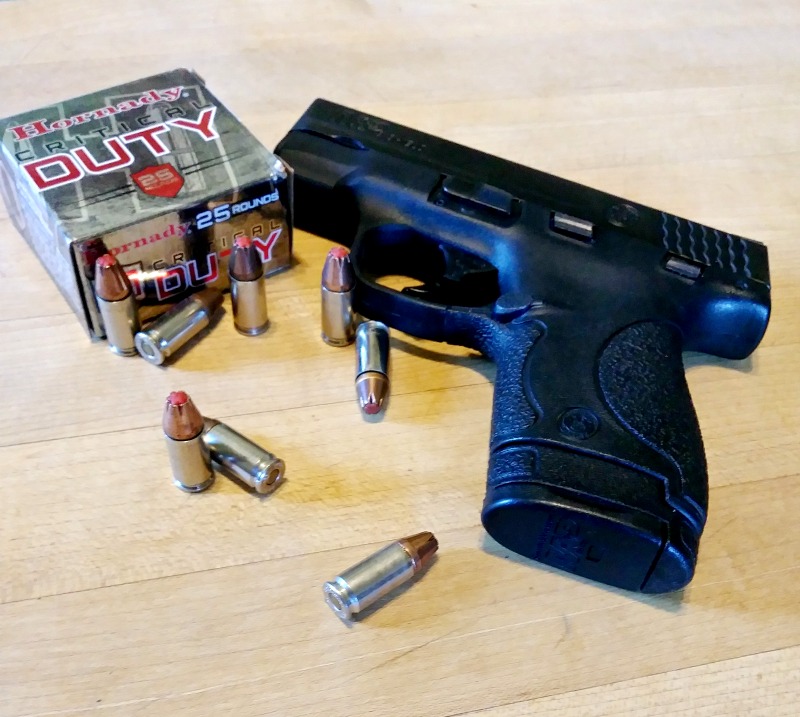
One of the most controversial topics in the shooting world is the proper concealed carry caliber.
Self-defense projectiles effectively incapacitate a threat through tissue damage and blood loss. Therefore, a larger wound channel is generally more effective, working to neutralize the threat faster. Larger more powerful calibers are more likely to accomplish this because the larger diameter naturally creates more tissue devastation. Also, a larger wound channel is more likely to hit vital organs and major arteries, increasing blood loss for quicker threat neutralization.
While some calibers are obviously more effective at creating blood loss than others, there is always a trade off. Handguns in larger calibers will definitely produce larger wounds, but also naturally produce more recoil. As we’ve said before, more felt recoil can have a negative effect on shooter confidence and accuracy, especially for weaker or recoil sensitive shooters.
How Big Do You Go?
Many self-defense “experts” believe any caliber smaller than .40 is ineffective for personal protection. However, if a shooter is incapable of putting multiple rounds on target with a large caliber handgun, that weapon is relatively useless for self-defense. Ultimately, any round on target is better than a clear miss, so again, choose a caliber you are capable of shooting with proficiency and confidence.
Also, with modern advancements in self-defense ammunition, smaller caliber weapons have become far more effective for personal defense than they once were, even in the recent past. Engineered to produce massive expansion, weight retention, and energy transfer, specialized self-defense ammo loaded in a smaller caliber weapon helps level the playing field.
If a .22 is all you can handle effectively, it is certainly better than nothing. Be sure to load that weapon with the best self-defense rounds you can find. However, if you can handle a bigger round…you should carry the bigger round. In short, don’t be embarrassed or ashamed to carry a small caliber handgun, but carry the biggest you can shoot effectively.
Choosing the Right Handgun
Handguns are a lot like shoes. There is no one size fits all option. Also, there is no one style that fits every purpose. A guy isn’t going to feel comfortable playing racquetball in his girlfriend’s high heels. Likewise, his small-framed girlfriend probably won’t be happy wearing her boyfriend’s size 12 boots around town to do errands.
An effective weapon is one that fits your body and your lifestyle, just like a good pair of shoes.
What to Look For on the Showroom Floor
Not every gun owner has the same grip strength, hand size, or wrist stability. A handgun that works well for one shooter may be an absolute nightmare for another. Therefore, it is important to handle a weapon as extensively as possible before making a purchase. Here are few things to consider when initially handling a potential weapon for concealed carry:
- Do your fingers wrap comfortably around the grip?
- Is the magazine easily ejected while you are holding the weapon?
- Can you pull back the upper receiver and lock it to the rear without excessive effort?
What to Look for When Shooting
Simply handling a firearm in the showroom is not enough. Experiencing shooting the weapon on the range before committing to carrying it concealed is essential. Picking a handgun based on how it fits your hand on the showroom floor isn’t enough. You also want to make sure you can maintain a firm grip while shooting. You need to experience the gun’s recoil and determine if it causes inconsistencies in accuracy or loss of control.
If possible, borrow the same model handgun from a friend or rent one from a local gun range. Purchasing a firearm without having the experience of shooting it is like buying a pair of shoes without first trying them on. They may look fine in the box, but once you have them on your feet, you may discover they pinch your toes or rub your heels leaving painful blisters.
Here are a couple things to consider when handling a potential concealed carry weapon on the range:
- Can you handle the gun’s recoil?
- Can you consistently put multiple rounds on target even when under stress?
If you answer “no” to any of these questions when evaluating a concealed carry pistol, then it is probably not the right gun for you. Even if your best friend, husband, co-worker, or the showroom salesman says it is the absolute best concealed carry pistol on the face of the planet, if it doesn’t feel right or shoot well for you, you should find another option that does suit you.
Best Concealed Carry Gun Recommendations
These are some recommendations from our staff. We’ve asked them for some suggestions they’d feel comfortable offering up to relatively inexperienced shooters. (After all, odds are good you haven’t carried a firearm for long if you’re reading this.)
Concealed Carry Pistol Suggestions:
1.) Sig Sauer P365
The P365 took the shooting world by storm in 2019 and it remains incredibly popular for good reason. The base level model of this pistol offers a 10 round magazine (+1 in the chamber.) It’s 3-inch barrel doesn’t make it an “easy shooter” but you can do much worse when it comes to recoil management. The trigger on this pistol is what stands out for a lot of us. The biggest drawback might be price. This pistol will run you about $500 for the base model. For seasoned gun owners, that’s not bad. For newbies, 5-bills might be more than they’d like to put down.
2.) Smith & Wesson 380 Shield-EZ
Most of us here cringe when hear the term “starter pistol.” It’s not like there are beginner level pistols that are potentially less dangerous or lethal than any other pistol. If you’re a newer gun owner, Smith & Wesson’s 380 Shield-EZ is an awesome choice. Incredibly easy to rack, a joy to shoot in 380 ACP, and built by a quality manufacturer, it’s tough to get better for the $400 price tag. The Shield-EZ has an 8 +1 capacity and 3.7″ barrel. It’s slightly larger than the Sig P365 which can make it tougher to carry but shooters who struggle to rack other pistols will love this gun. (In 2020, S&W released a 9mm version of this same pistol. If you’re unconvinced 380 ACP is a large enough round for self-defense, you might want to check it out.)
Budget Pick:
3.) Taurus G2C
We might be wise to start our Taurus explanation off with a disclaimer. Taurus doesn’t enjoy the best reputation in the shooting world when it comes to quality/reliability. Some of it reputation may be warranted based on past pistol releases. That said, we have a Taurus G2C here in the office and thus far we’ve put 1,000 rounds of 9mm ammo through it without failure. This 3.2″ barreled pistol gives you 12 round capacity and an MSRP of just a tick over $270. Frankly, you’re getting a lot of value at the price point. The G2C may not have the same buttery trigger as the Sig Sauer but you’re getting a great deal at half the price of the Sig.
Wrapping it Up
Don’t be afraid to turn down a firearm that doesn’t work for you. It is better to reject an ineffective weapon before you find yourself in an actual defensive situation. Try scaling your firearm up or down depending on circumstances until you find a model and caliber you can safely and effectively handle.
There are literally hundreds of options to choose from when it comes to concealed carry pistols. While the sheer number of options can seem overwhelming, that means the ideal weapon is out there waiting for you. With some research and experimentation, you’ll be carrying with confidence in no time.
